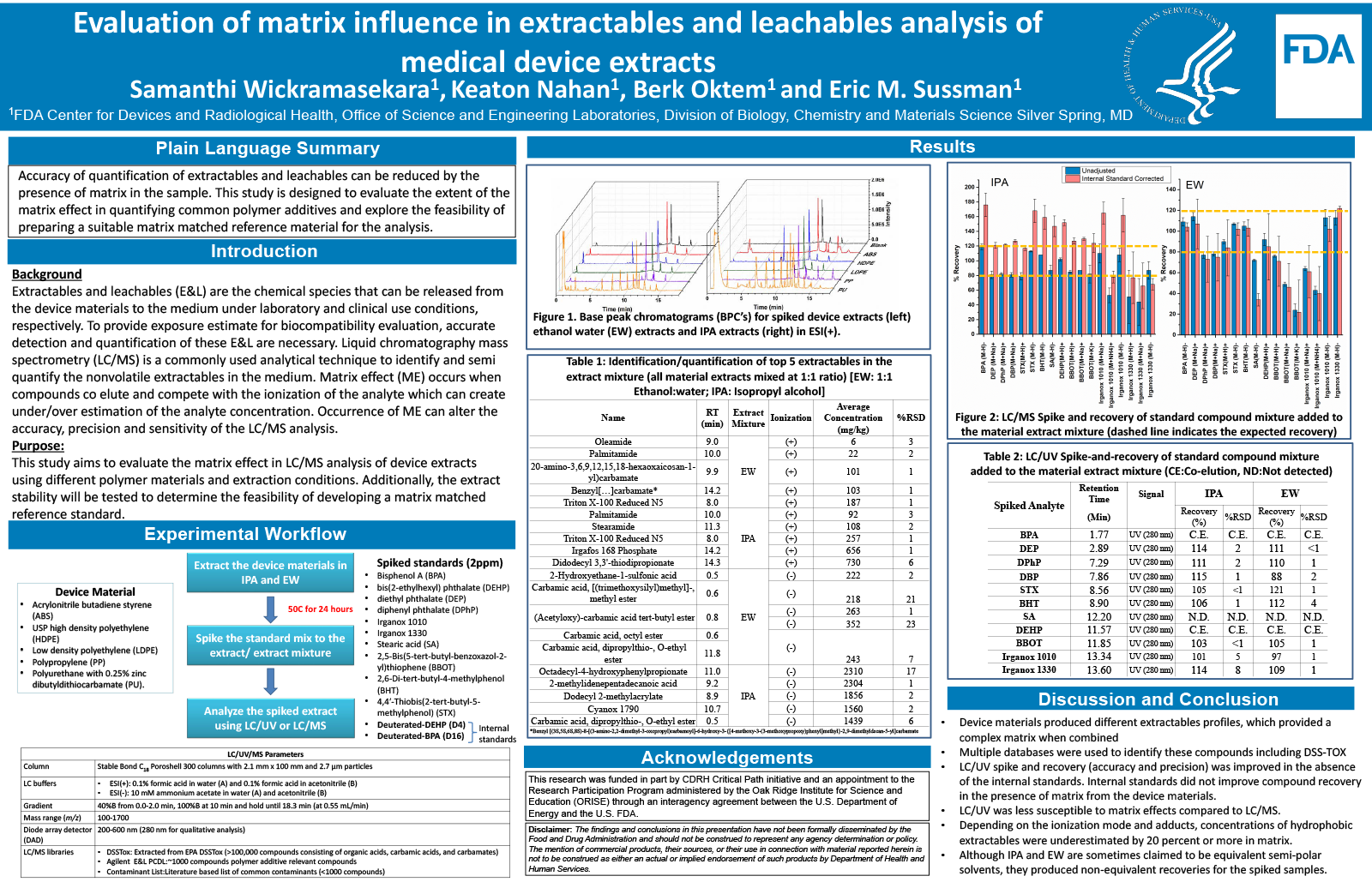2021 FDA Science Forum
Evaluation of Matrix Influence in Extractables Analysis of Medical Device Extracts
- Authors:
- Center:
-
Contributing OfficeCenter for Devices and Radiological Health
Abstract
Background
Extractables and leachables (E&L) are the chemical species that can be released from medical device materials to solvent media under laboratory or clinical use conditions, respectively. To determine exposure estimates for biocompatibility evaluation, accurate detection and quantification of these E&L are necessary. Liquid chromatography mass spectrometry (LC/MS) is a commonly-used analytical technique to identify and semi-quantify the non-volatile extractables in media. Matrix effects (MEs) occur when compounds co-elute and compete with the ionization of the analytes, which can create under/overestimation of the analyte concentration. Occurrence of MEs can alter the accuracy, precision and sensitivity of the LC/MS analysis.
Purpose
This study aims to evaluate the MEs on LC/MS analysis of device extracts using different polymer materials and extraction solvents. Additionally, the extract stability will be tested to determine the feasibility of developing a matrix-matched reference standard.
Methods
Device materials (polyurethane, high density polyethylene, low density polyethylene, acrylonitrile butadiene styrene, polypropylene) were extracted at 50 °C for 24-hours with two solvents (50% ethanol in water (EW) and 100% isopropanol (IPA)). A matrix mixture was prepared combining equal volumes of extracts. Sample extracts, including the mixture, were spiked with a 2-ppm mixture of compounds with varying physicochemical properties and deuterated internal standards(IS). Samples were analyzed using LC/UV/MS system in both positive (PIM) negative (NIM) ionization modes. Identification of polymer extractables was performed using the “Find by Formula” algorithm using Agilent E&L database with literature contaminants [ELCD] and carbamate [CDSSTD]/carbamic acids [CADSSTD] extracted from the EPA DSSTox MSReady database.
Results and Conclusions
For PIM LC/MS, a total of 125 extractables (66 from ELCD and 59 from CDSTTD) were identified in the IPA mixture and a total of 76 extractables (50 from ELCD and 26 from CADSTTD) in the EW mixture. Both IPA and EW mixtures for LC/MS yielded poor accuracies (Recovery >120%; Recovery <80%) when IS recovery was used. Further, results suggest antioxidants are best analyzed in NIM only due to comparable accuracies between LC-UV and LC/MS data. Our preliminary data demonstrates that matrix effect varies based on the polymer material extracted, which can be accounted for during calculation of the concentration of each E&L in device extract.

